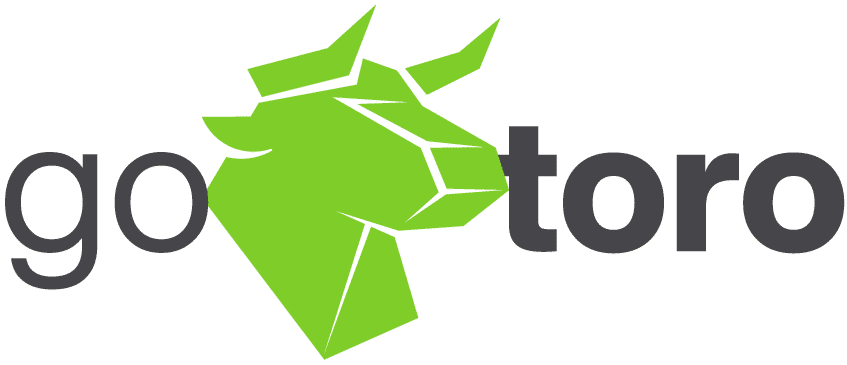Linking recruitment strategies with retention efforts is essential for fostering long-term employee satisfaction and organizational success. Effective recruitment processes not only fill immediate vacancies but also lay the groundwork for a stable and committed workforce. By strategically aligning recruitment with retention goals, companies can enhance employee loyalty, reduce turnover rates, and ultimately drive business success.
Understanding the Link Between Recruiting and Retention

Overview of Retention and Recruitment Link
The connection between the recruitment process and employee retention is critical. When recruitment strategies are aligned with retention efforts, organizations can ensure that they hire candidates who are likely to stay and thrive within the company. Strategic hiring practices, such as thorough vetting and alignment with company culture, set the stage for long-term employee satisfaction and loyalty. This approach helps to create a workforce that is not only skilled but also deeply committed to the organization’s mission and values.
Understanding Long-Term Fit
Cultural Fit
One of the most important aspects of retention and recruitment is ensuring cultural fit. Hiring candidates who align with the company’s culture and values can significantly impact their long-term engagement and satisfaction. Methods for assessing cultural fit during the recruitment process include personality assessments, cultural fit interviews, and situational judgment tests. These tools help identify candidates who not only possess the necessary skills but also share the organization’s core values and behavioral expectations.
Role Clarity
Clear communication of job descriptions and expectations is crucial to avoid mismatches and ensure candidates understand what the role entails. Providing detailed and accurate job descriptions helps candidates gauge whether they are a good fit for the position, which in turn supports retention. For example, a well-crafted job description for a project manager might include specific duties, required skills, and potential career paths within the company. This clarity helps to attract candidates who are well-suited for the role and more likely to stay long-term.
By focusing on these key areas—cultural fit and role clarity—companies can enhance their retention and recruitment strategies, ultimately fostering a more stable and satisfied workforce.
Comprehensive Screening Process

Behavioral Interviews
Behavioral interviews are a crucial part of the retention and recruitment process. Utilizing behavioral interview techniques allows employers to gauge how candidates have handled situations in the past and predict their future behavior. This approach helps in identifying candidates who not only have the required skills but also fit well within the company’s culture and values.
Sample Behavioral Interview Questions:
- Describe a time when you had to handle a difficult project. How did you ensure its success?
- Can you give an example of how you dealt with a conflict in the workplace?
- Tell me about a time when you went above and beyond your job responsibilities to achieve a goal.
These questions are designed to assess the candidate’s problem-solving skills, teamwork, and alignment with the company’s core values, thereby strengthening the retention and recruitment process.
Skills Assessment
Implementing practical tests and assessments is essential to ensure that candidates possess the necessary skills for the role. Different types of skills assessments, such as technical tests, case studies, and problem-solving exercises, can be employed during the recruitment process.
Types of Skills Assessments:
- Evaluate specific technical skills required for the job, such as coding tests for software developers.
- Present real-world scenarios relevant to the job to assess the candidate’s analytical and decision-making abilities.
- Test the candidate’s ability to think critically and solve problems under pressure.
By integrating these assessments into the recruitment process, companies can better predict job performance and enhance retention and recruitment efforts.
Transparent Communication
Honest Job Previews
Providing realistic job previews is a vital aspect of transparent communication in the retention and recruitment process. Honest job previews give candidates a clear understanding of what the job entails, including potential challenges. This transparency helps in setting realistic expectations and reduces the likelihood of early turnover.
Strategies for Offering Job Previews:
- Allow candidates to shadow current employees to get a firsthand experience of the job.
- Create videos that showcase a typical day in the role, highlighting both the rewards and challenges.
These strategies ensure that candidates are well-informed and aligned with the job expectations, contributing to better retention and recruitment outcomes.
Career Path Transparency
Discussing potential career paths and growth opportunities within the company is crucial for attracting candidates looking for long-term career development. Career path transparency during the recruitment process highlights the company’s commitment to employee growth and development.
Importance of Career Progression:
- Candidates are more likely to join and stay with a company that offers clear and achievable career advancement opportunities.
- Clear career paths motivate employees to perform well, knowing that their efforts can lead to progression.
By emphasizing career path transparency, companies can enhance their retention and recruitment strategies, ensuring long-term employee satisfaction.
Employee Value Proposition (EVP)
Competitive Benefits
Offering competitive salaries and benefits is fundamental to a strong employee value proposition (EVP). Benefits that meet or exceed industry standards are crucial for attracting and retaining top talent. Highlighting unique benefits can set your company apart in the competitive job market.
Unique Benefits to Highlight:
- Initiatives that support employees’ physical and mental health.
- Financial support for employees pursuing further education.
- Opportunities for employees to own shares in the company.
These benefits not only attract potential candidates but also contribute to higher retention rates, making them essential components of the retention and recruitment strategy.
Work-Life Balance
Promoting policies that support work-life balance is a key element of an effective EVP. Flexible working hours, remote work options, and wellness programs are all strategies that contribute to a healthier and more balanced work environment.
Examples of Successful Work-Life Balance Initiatives:
- Allowing employees to choose their working hours to accommodate personal commitments.
- Providing the flexibility to work from home or other remote locations
These initiatives not only enhance employee satisfaction but also improve retention rates, reinforcing the importance of work-life balance in the retention and recruitment process.
Onboarding for Success

Structured Onboarding Programs
Developing comprehensive onboarding programs is essential for successful retention and recruitment. Effective onboarding acclimates new hires to the company culture, their role, and their team, setting the stage for long-term success.
Key components of an effective onboarding program include orientation, training, and integration activities. Orientation introduces new employees to the company’s mission, values, and culture, while providing an overview of the organizational structure and key policies. Training offers role-specific instruction to ensure new hires have the necessary skills and knowledge to perform their job effectively. Integration activities, such as team-building exercises and social events, help new employees build relationships with their colleagues. By implementing structured onboarding programs, companies can enhance retention and recruitment efforts, ensuring new hires feel welcomed and prepared to contribute to the organization.
Mentorship and Support
Pairing new employees with mentors is a valuable strategy for retention and recruitment. Mentors provide guidance and support during the initial months of employment, helping new hires navigate their roles and the company culture. The benefits of mentorship programs include guidance from experienced colleagues, dedicated support for questions and concerns, and opportunities for professional growth.
To maximize the effectiveness of mentorship programs, it’s important to align mentors and mentees based on similar interests, career goals, and work styles, as well as considering personality compatibility to ensure a productive and supportive mentoring relationship. Mentorship programs play a critical role in retention and recruitment by fostering a supportive environment and promoting professional growth.
Continuous Engagement and Development

Regular Check-Ins
Scheduling regular check-ins and feedback sessions is vital for ongoing engagement and effective retention and recruitment. These interactions provide an opportunity to address any concerns, recognize achievements, and ensure that employees remain motivated and aligned with company goals.
Open communication is essential for maintaining transparency and trust between employees and managers. Regular check-ins allow for constructive feedback, helping employees improve and grow in their roles, and ensure employees feel heard and valued, which boosts morale and retention. A sample check-in schedule might include weekly updates on current projects and any immediate concerns, monthly in-depth discussions on performance, goals, and development opportunities, and quarterly comprehensive reviews of progress, achievements, and long-term career plans. By maintaining regular check-ins, companies can enhance retention and recruitment by keeping employees engaged and aligned with organizational goals.
Professional Development
Investing in continuous learning and development opportunities is a key factor in successful retention and recruitment. Providing employees with the tools and resources to grow their skills and advance their careers demonstrates a commitment to their long-term success.
There are various types of development programs that companies can offer, such as workshops, online courses, and conferences. Workshops provide interactive sessions on relevant topics to enhance employees’ skills and knowledge. Online courses offer access to e-learning platforms for flexible, self-paced learning, while conferences allow employees to stay updated on industry trends and network with professionals. By prioritizing professional development, companies can improve retention and recruitment by fostering a culture of continuous learning and growth.
Building a Strong Employer Brand
Positive Work Environment
Creating a positive and inclusive work environment is crucial for attracting and retaining top talent. A supportive workplace culture not only enhances employee satisfaction but also strengthens the company’s employer brand, making it more attractive to potential candidates.
Strategies for fostering a positive workplace culture include organizing regular team-building events to encourage collaboration and camaraderie among employees, implementing recognition programs to reward employees for their hard work and contributions, and promoting diversity and inclusion through policies and practices that support a respectful and equitable workplace. By focusing on building a positive work environment, companies can enhance their retention and recruitment efforts, creating a workplace where employees feel valued and motivated to stay long-term.
Employer Reputation
Maintaining a strong employer brand is essential for effective retention and recruitment. A positive reputation can be cultivated through positive reviews on job sites, employee testimonials, and community involvement. When employees and candidates see that a company is respected and valued in the industry, it enhances the attractiveness of the workplace.
Companies can leverage their employer brand in recruitment marketing by showcasing these positive reviews and testimonials on their website and social media channels. Highlighting involvement in community events and corporate social responsibility initiatives also strengthens the employer brand. For instance, a tech company might highlight its commitment to sustainability and innovation, attracting candidates who value these principles. By actively promoting a positive employer brand, companies can attract and retain top talent more effectively.
Data-Driven Recruitment
Analytics and Metrics
Using data analytics to track the effectiveness of recruitment strategies and their impact on retention rates is a crucial aspect of retention and recruitment. By analyzing specific metrics, companies can gain insights into their hiring processes and make data-driven improvements.
Metrics to track include time-to-fill, which measures the average time it takes to fill a position; quality-of-hire, which assesses the performance and fit of new hires; and employee turnover rates, which indicate the stability of the workforce. By monitoring these metrics, companies can identify areas of improvement and optimize their recruitment strategies to enhance retention.
Feedback Loops
Collecting feedback from new hires and hiring managers is vital for continuously improving the recruitment process. Feedback can be gathered through surveys and exit interviews, providing valuable insights into the candidate experience and areas for improvement.
Tips for gathering and analyzing feedback include creating anonymous surveys to encourage honest responses, conducting structured exit interviews to understand reasons for leaving, and regularly reviewing feedback to identify patterns and trends. By implementing feedback loops, companies can refine their recruitment processes and enhance retention and recruitment outcomes.
Holistic Approach
Hiring for retention requires a holistic approach that integrates thorough recruitment practices, clear communication, and continuous employee engagement. By investing in strategic recruitment, companies can achieve long-term success and maintain a stable, satisfied workforce. Request a demo from GoToro today to see how our solutions can transform your recruitment and retention strategies.


